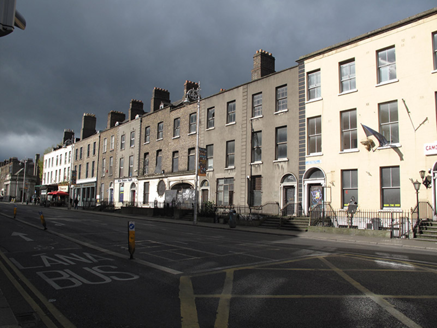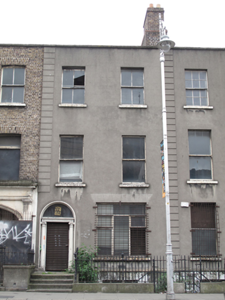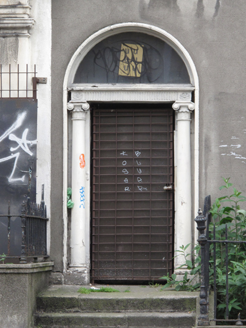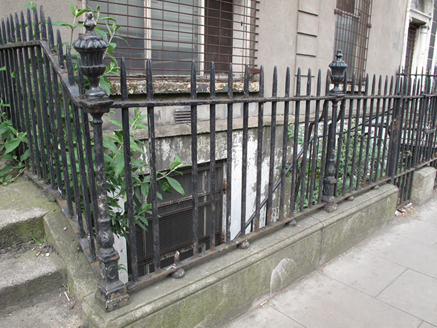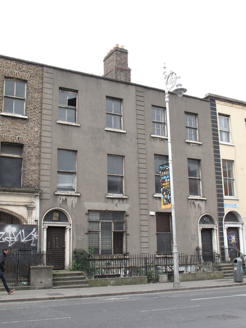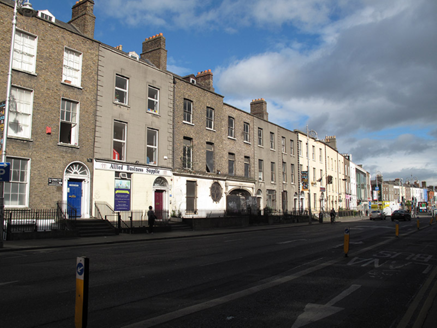Survey Data
Reg No
50110415
Rating
Regional
Categories of Special Interest
Architectural, Artistic, Historical
Previous Name
Convent of the Little Sisters of the Assumption
Original Use
House
Historical Use
Convent/nunnery
Date
1810 - 1820
Coordinates
315616, 232830
Date Recorded
01/05/2017
Date Updated
--/--/--
Description
Attached two-bay three-storey former house over basement, built c. 1815, as one of pair with adjoining house to north. Later used as convent. M-profile roof, hipped to south, hidden behind rendered parapet with cut granite coping, having shared red brick chimneystack. Lined-and-ruled rendered walling to front (east) elevation having render quoins and cut granite plinth course over rendered basement walling. Square-headed window openings with masonry sills, mixed one-over-one pane and two-over-two pane timber sliding sash windows, and replacement windows. Steel grille to ground floor and basement windows. Round-headed doorway with moulded render surround. masonry Ionic doorcase with plain fanlight and recent metal door. Granite steps having cast-iron bootscrape to platform. Wrought-iron railings with cast-iron corner posts set on carved granite plinth wall enclosing basement area, with matching gate.
Appraisal
This building retains its early form and proportions. Notable historic features, such as a well-executed classically influenced doorcase and railings lend visual as well as architectural interest to the composition. A convent was established in this building and its neighbours to the north by the Little Sisters of the Assumption in 1891. Mosaic work was undertaken there by Ludwig Oppenheimer Ltd in 1915. Casey (2005) refers to the row of houses from 1-12 Camden Street Upper as 'the most complete and satisfying terrace on the street'. She notes their 'tall piano nobile windows, Adamesque doorcases, granite area parapets and old-fashioned railings with urn newels'. St. Kevin's Port was renamed Camden Street after the 1st Earl Camden, in 1776. Much of the original housing stock on the street was rebuilt in the nineteenth and twentieth centuries.
